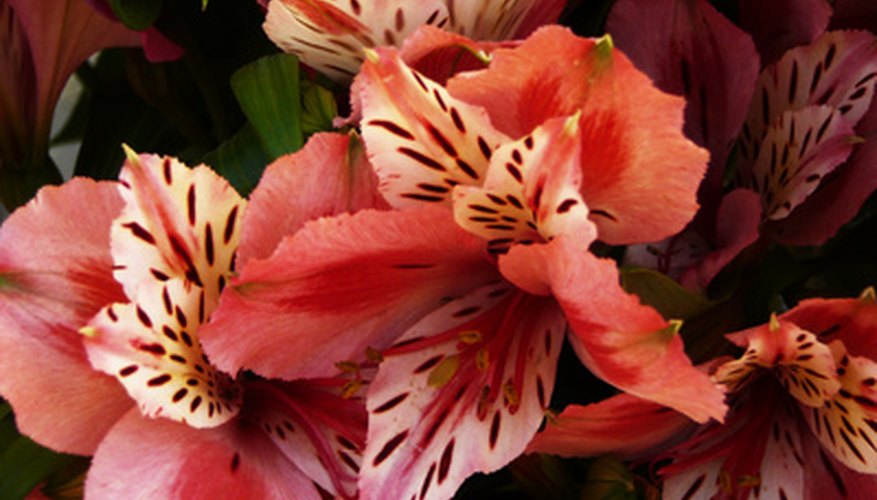Alstroemeria, or Peruvian lily, blooms from late spring through midsummer. It adds colour to perennial flower beds, producing lily-like blossoms in shades of yellow and orange. Plants reach between 2 and 4 feet tall, making them a suitable background to lower-growing annual and perennial borders. Alstroemeria grows from tuberous roots, similar to bulbs. The roots go dormant in fall, but they are hardy enough to overwinter in the most gardens. Regular trimming encourages the alstroemeria to produce additional buds and blooms, while also keeping the foliage attractive and lush.
- Alstroemeria, or Peruvian lily, blooms from late spring through midsummer.
- Regular trimming encourages the alstroemeria to produce additional buds and blooms, while also keeping the foliage attractive and lush.
Cut off the old flower heads as soon as the blossoms begin to wilt, using a pair of clean shears. This process, called deadheading, prevents seed production and encourages the alstroemeria to produce more flowers.
Trim back the flower stems to their base once all the buds along the stem have finished blooming.
Remove yellowed or damaged leaves throughout the summer season. Cut these off where they emerge from the plant.
Cut the entire plant back to within 3 inches of the ground after the foliage yellows and dies back naturally in fall. Remove all the removed leaves from the bed and compost or dispose of them.
WARNING
Do not remove the foliage while it is still green. The leaves collect nutrients after the plant has stopped flowering, so premature removal can stunt next year's growth.
